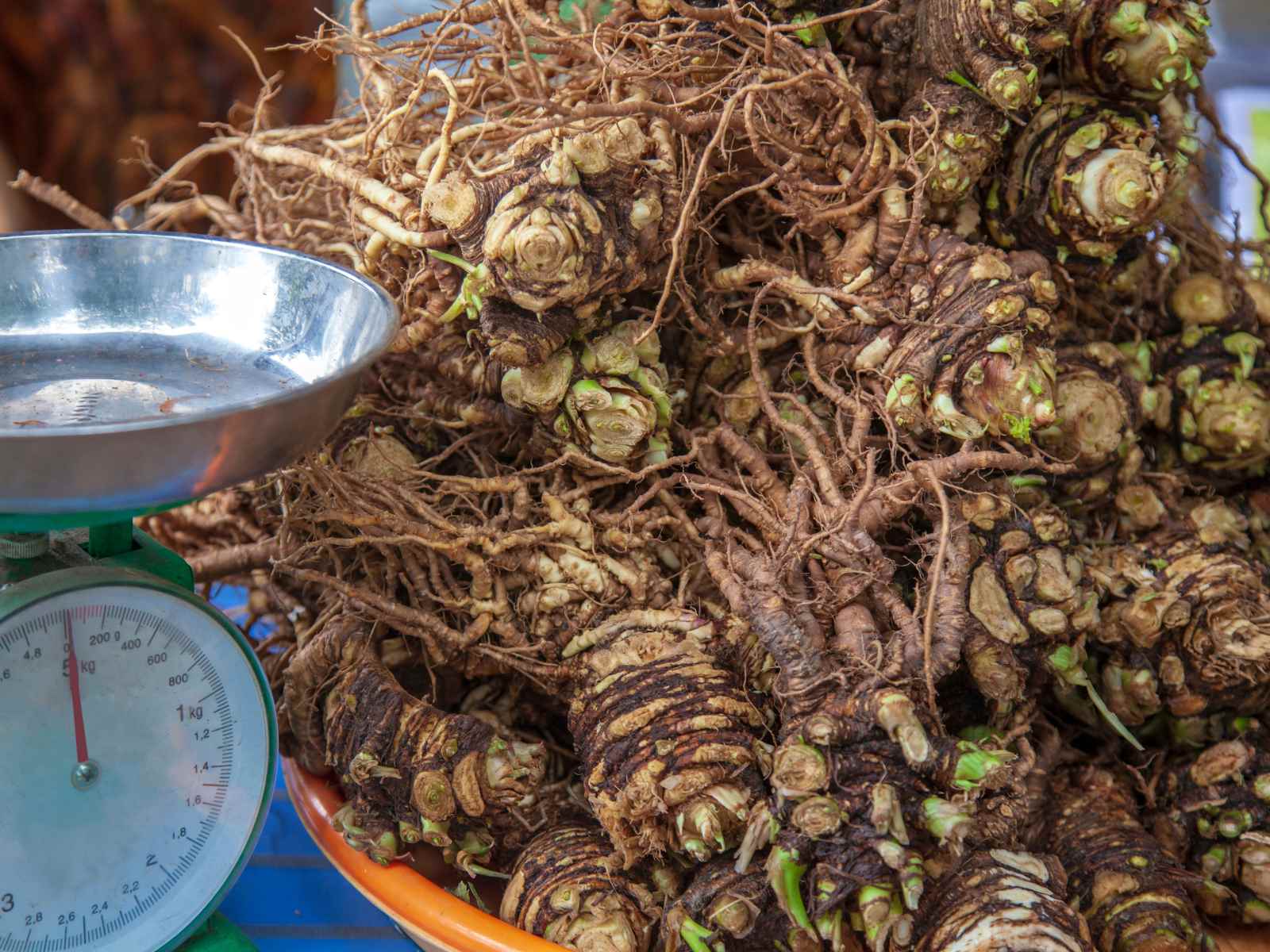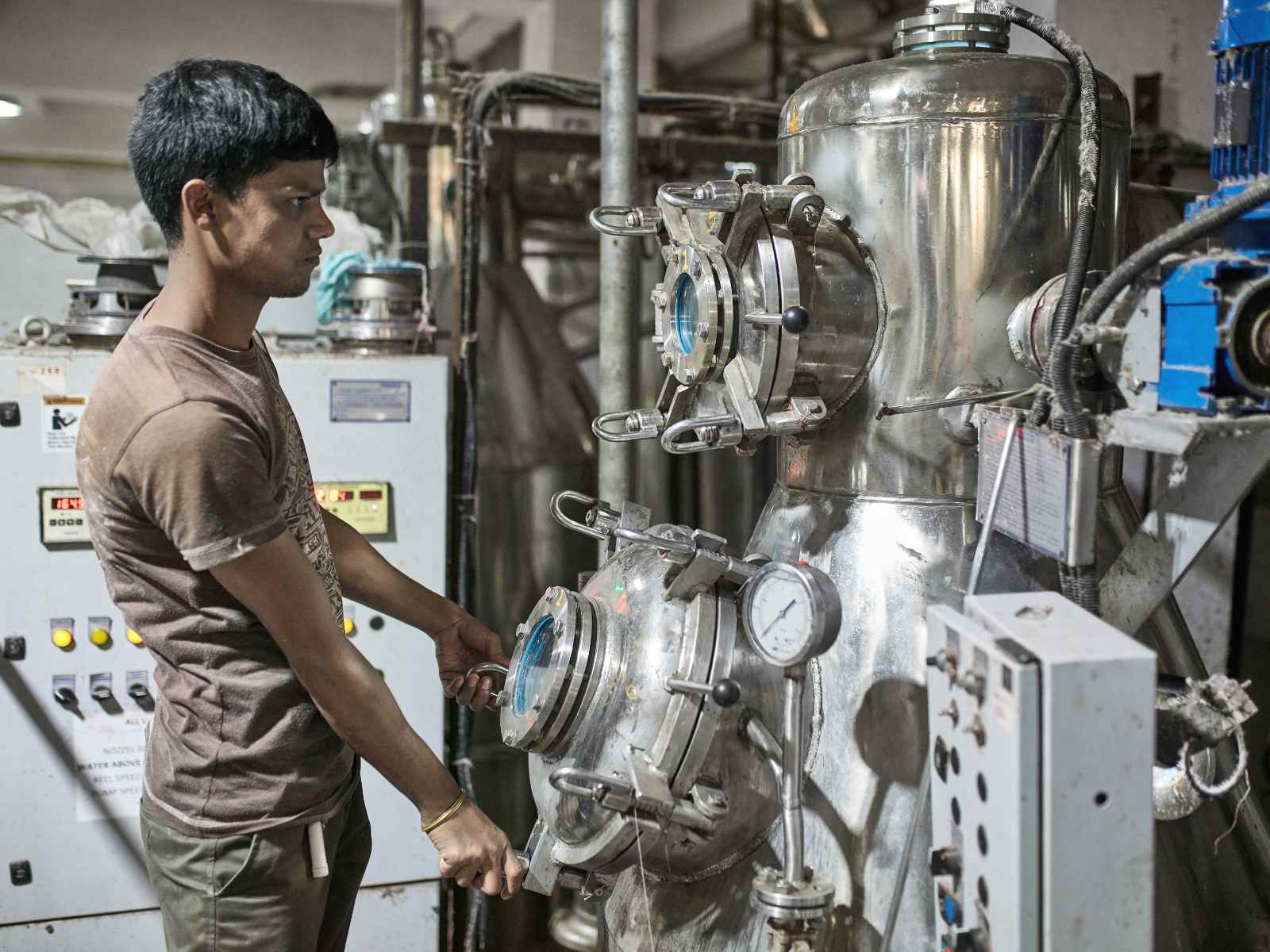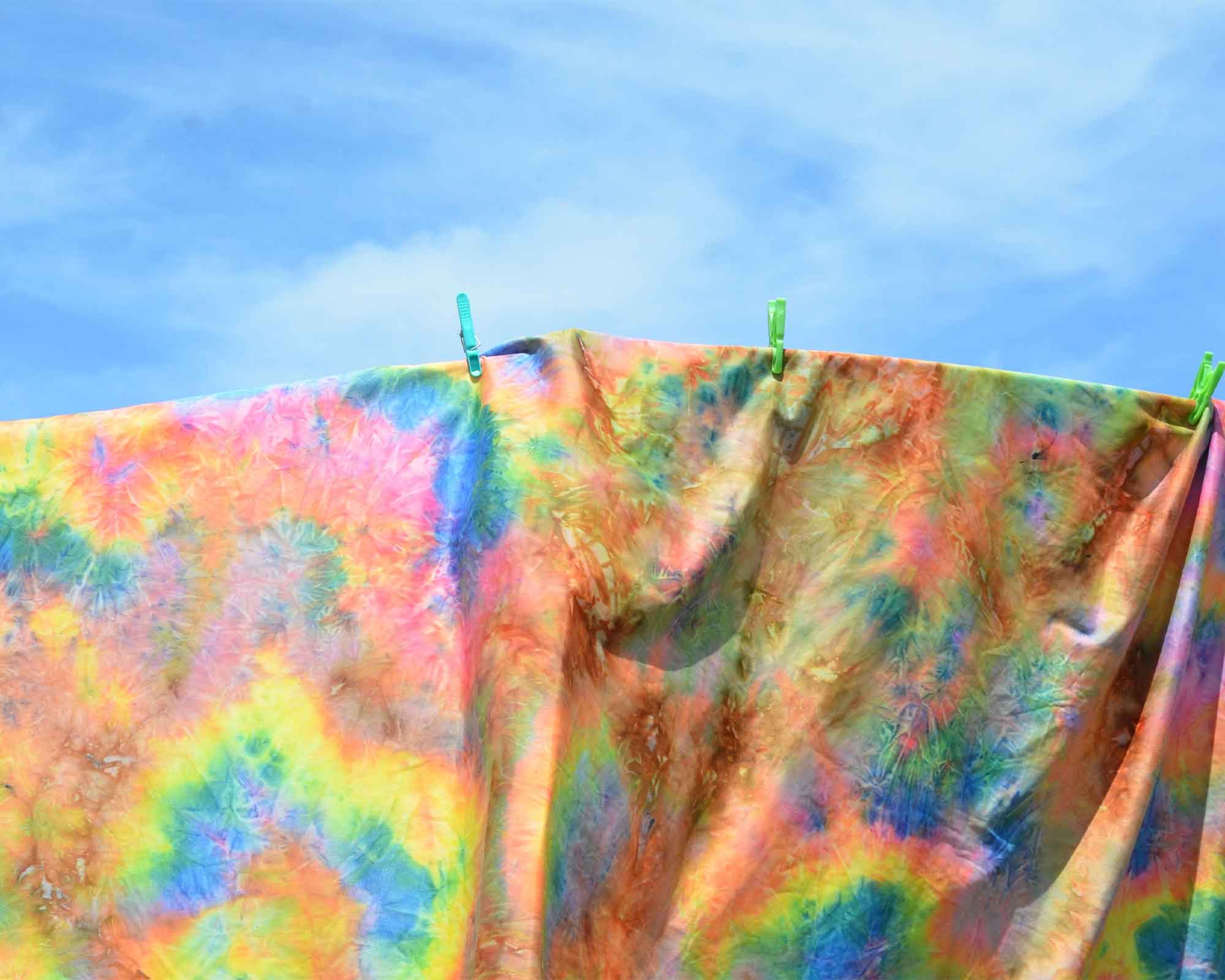Whether we realise it or not, most of the garments we wear have been treated to apply—or remove—colour. The negative impacts of those treatments, and specifically dyeing, on people, the planet, and animals are often overlooked, but here we’re exploring them, and examining the more sustainable alternatives.
A brief history of textile dyeing
Evidence of textile dyeing goes all the way back to Ancient Egypt. Back in those days, dyes were made with natural resources such as vegetables, flowers, and insects. It wasn’t until much later—the 19th century, in fact—that dyes were synthesised with chemicals, but more on that later.
Historically, colour has been used in clothing to represent status or socio-economic position. Brighter and more vibrant colours were often reserved for the elite and royalty since they were expensive. Take Tyrian purple—a dye said to have been developed as long ago as 1200 BCE and derived in tiny quantities from sea snails. Tens of thousands of snails were required to make enough dye for a robe, so only kings and emperors were allowed to wear clothes dyed with the prized Tyrian purple.
Some of the most well-known natural dyes from history include safflower, madder root, and indigofera. The latter makes indigo, as its name suggests, and is sometimes thought to have originated in Japan but has a broad history spanning thousands of years across Asia, South America, and Africa. Originally made from plants on a small scale, indigo dye is in modern times often synthesised using intensive labour and chemical processing. We can find the same story across the rainbow.

Madder root—a common natural source for making red dye.
The state of textile dyeing today
Modern textile dyeing using chemicals happened by accident when in 1856, the chemist William Henry Perkin found that an experiment using coal tar had stained silk with a bright purple hue. This discovery came at the same time as textile production was being mechanised during the Industrial Revolution. Eventually, the slow and often difficult natural dyeing processes just couldn’t keep up with the vast amounts of textiles being produced. Plus, natural dyes couldn’t always achieve the desired vibrance, and synthetic dyes became cheaper.
Today, as much as 90% of clothing is dyed synthetically and requires incredible amounts of water and often toxic chemicals in production. For instance, that synthesised indigo dye we mentioned earlier? It’s a chemical cocktail that includes formaldehyde, aniline and hydrogen cyanide, and it’s not the only culprit. Given that some estimates suggest as much as two-thirds of all dyes manufactured are consumed by textile dyeing, that’s a lot of potentially toxic substances out in the materials we wear and handle daily. In fact, the UN Environment Program reported that textile dyeing is the second largest polluter of water in the world.
Reports suggest most textile dyes end up polluting our waterways
Water use in fashion production is staggering, and a lot of it happens during the textile dyeing phase. This includes pre-rinsing processes, the baths of dye that are required to saturate textiles with their desired colour, and post-dye rinsing.
Like much of the data surrounding water usage in fashion production, the exact numbers for consumption in the dyeing and finishing phase of textile fibres are hard to determine, but experts have estimated that as much as 200 tonnes of water could be used for every tonne of textiles produced. And the majority of this water returns to nature filled with residual dyes, hazardous chemicals, heavy metals, microfibres, and mordants (chemicals used to bond dyes with fabric). A 2019 report on synthetic dyes in textile effluent in the European Journal of Microbiology and Immunology noted that “even after effluent treatments, as much as 90% of these dyes are estimated to still get discharged into rivers were chemically unchanged.”
When wastewater containing dyes is discharged into the environment, the chemicals within it can affect soil fertility, deplete waterways of oxygen, reduce photosynthesis in aquatic plants, and cause serious harm or even death to animals in the area.
So while consumers in the Global North pile colourful clothing into their shopping baskets, rivers and streams in countries with high clothing manufacturing at once become toxic with dyes and pollutants, as fashion’s wastewater is routinely dumped into their waterways. A report by CNN found that several waterways in Bangladesh and China had turned black and red thanks to dye dumping by nearby factories, which is enabled by poor regulation and enforcement.
How synthetic textile dyes affect people
The serious health concerns for people working directly with synthetic dyes—and other chemicals in the garment supply chain—are well documented and include skin irritation, cancer, neurotoxicity, and much more, yet they’re often overlooked amidst the myriad of other urgent labour rights issues.
Elsewhere, those living near a polluted waterway in Bangladesh—whose access to fresh water has already been disrupted by contaminated textile effluent—have reported instances of skin irritation, gastrointestinal problems and fevers after going into the water or washing with it.
And the problems don’t stop at the supply chain—chemicals from dyes used in clothing can affect consumers who wear it, too.
Some synthetic textile dyes used today, like certain azo dyes, are carcinogenic. Although these dyes are banned in the EU due to their toxicity, they are still commonly used to dye fast fashion clothing elsewhere the world. Since azo dyes are water-soluble, this makes them easy for your skin to absorb and, as a result, may cause symptoms, including skin and eye irritation. There’s also evidence to show that disperse dyes, for instance, can act as skin sensitisers, causing skin irritation and other health issues.
Alden Wicker, author of the book To Dye For: How Toxic Fashion is Making Us Sick—and How We Can Fight Back, wrote in The Guardian that while there’s a growing list of cases linking health problems with the clothes people wear, there remains a lack of scrutiny over the chemicals used in clothing versus other sectors like the beauty industry. One possible reason for that, Wicker explains, is that “neither consumers or professionals know which, or even how many, chemical substances are used to manufacture, process, weave, dye, finish, and assemble clothing and accessories.”
As is true with much modern fashion production, large brands with huge purchasing power that outsource most of their manufacturing to countries like Bangladesh and China in order to exploit their cheap labour forces play a significant role in this pollution. By perpetuating a cycle of take-make-waste with little regard for their impact, these brands prioritise profits above the health and wellbeing of people, the planet, and animals.

A person operates a textile dyeing machine in a factory in India
Are natural dyes more sustainable?
So does all this mean we should abandon synthetic dyes and return to our roots by only using dyes derived from natural resources, like plants, seeds, and insects? Not quite. They have their own set of problems, including water use and, as the demand for raw materials would rise significantly, potential species loss. And while the dye materials themselves may not be toxic, the chemicals used to bind them to fabric (mordants) usually are, which brings us back to square one.
It is possible to dye clothing without mordants, and some brands do. But the colour will often fade or change over time, and while some people would cherish this as a unique part of their more sustainable garment, not everyone feels the same.
Some natural dyes are also naturally high in tannins and are known as “substantive dyes”. They bond well with fibres even without mordants and don’t see as much fading, but they still aren’t used on a commercial scale, because they’re generally only compatible with natural fibres, and therefore cannot be used in conjunction with synthetic fibres—such as polyester—which are widely used by fast fashion brands.
Improvements and innovations in textile dyeing
In recent years, organisations like Greenpeace and its Detox Fashion campaign, Partnership for Cleaner Textile (PaCT), and the ZDHC Roadmap to Zero have pushed for reform on a global scale. Certifications that ensure product safety have also emerged—OEKO-TEX’s STeP and STANDARD 100, for example, inspect components of a garment and its production to make they’re safe for people and the environment. Similarly, bluesign aims to find solutions for more responsible textile production by eliminating harmful substances in each step of the supply chain. We take both of these certifications into consideration when we rate brands.
There are also many startups working hard to shift the way we colour clothing through waterless dyeing. DyeCoo is one innovation in synthetic dyeing that uses CO2 rather than water and additional chemicals to adhere colours to fabric. Gap and Inditex were among several brands reported to have committed to using DyeCoo in 2022.
G-Star Raw and Wrangler have also experimented with foam-dyeing denim—a new technique that uses significantly less energy and water than conventional dyeing. And startup Nature Coatings has created an alternative to the traditional petroleum-derived carbon black pigment, which uses FSC-certified wood waste as a base material.
Good On You’s fashion ratings manager Kate Hobson-Lloyd says of these improvements: “It’s great to see innovations such as CO2 dyeing and foam dyeing coming to the forefront, but it needs to be acknowledged that many brands continue to fall short when it comes to chemical management and reporting on this topic. Good practice is for brands to utilise certifications such as bluesign, GOTS, and Oeko-Tex STeP, and to clearly communicate to consumers which of their materials and products are compliant.”
She continues: “It’s also important to consider the chemical management policies that brands have in place. In particular, checking whether or not a brand publishes a Restricted Substances List (RSL), which should detail the dyes and other substances that a brand permits its suppliers to use, along with the acceptable limits. Larger brands, in particular, should adopt the ZDHC Manufacturing Restricted Substance List, and clearly disclose the proportions of their suppliers that are compliant. It’s very easy for brands to say that they are not using hazardous dyes, but it’s important to look at the evidence of this.”
Legislating to prevent textile dye pollution
Though many countries have policies for the environment and chemical pollution, wastewater dumping and hazardous chemical use are still rife in some of the world’s largest garment manufacturing hubs. But action is being taken. The governments of Bangladesh, Indonesia and Pakistan, for instance, partnered with the UN Environment Program in 2022 on a five-year programme to reduce the use and release of such chemicals in the textiles sector. It will offer support for small businesses and manufacturers to improve their management of hazardous chemicals, manage the risks for workers, and ultimately eliminate the worst chemicals from their processes.
In 2020, Minister Shahab Uddin from Bangladesh’s Ministry of Environment, Forest, and Climate Change told CNN that measures were in place to address the chemical pollution issues, including “updating conservation and environmental laws, imposing fines on polluters, monitoring water quality, setting up centralised treatment plants, and working with international development partners to improve wastewater treatment.”
You’ll find a similar story in China, which has also introduced more stringent environmental policies in recent years, which helped to improve inland water surface quality. In 2022, the country mandated environmental reporting for “major dischargers of pollutants”, among other businesses. However, toxic and polluted water is still an issue in many areas, and the problem is far from resolved.
Where do we go from here?
Like so many of fashion’s sustainability issues, the use of dyes that contain harmful chemicals and problematic wastewater management are deeply ingrained in the fashion system. Many of the world’s biggest and most influential brands push for profits instead of fostering an industry that values workers, longevity, and leaving as little impact on the world as possible. Some people suggest that the only way to combat this is for governments to implement legislation forcing companies to make positive changes and hold them accountable when they don’t, while others believe that boycotting brands known to be doing poorly in these areas is the answer.
But how do you avoid harmful synthetic dyes when, as Wicker noted, there’s such little transparency about what’s in them and your clothes? Our advice is, as ever, to do your best with the information available and make decisions that align with your values by checking each brand’s rating on our directory or app before shopping. When we’re rating brands, we consider whether they have targets surrounding hazardous chemical usage, whether they’re certified by any organisations working to eliminate harmful substances in the supply chain, and if they have a manufacturing restricted substances list that aligns with the Zero Discharge of Hazardous Chemicals program.
And finally, some sage advice from Wicker, who explained that these days she “avoid[s] cheap, knock-off, or ultra-fast fashion brands. I shop with companies I trust, who care about their reputation and have a chemical management program or labels such as bluesign, OEKO-TEX, or GOTS. I choose natural fibres whenever possible, and avoid fancy promises like stain repellency, anti-odour finishes, easy-care and anti-wrinkle fabrics. I wash any new clothing before I wear it, with unscented, non-toxic laundry detergent. And I trust my nose—if something stinks, I send it back.” We couldn’t agree more.

















